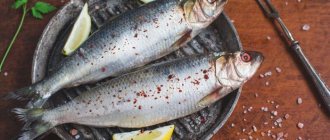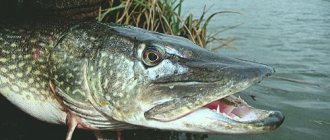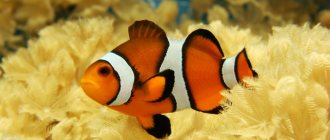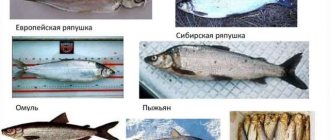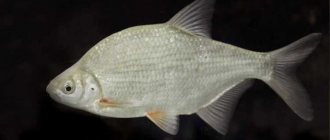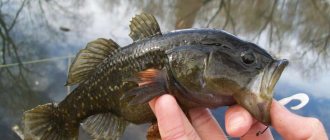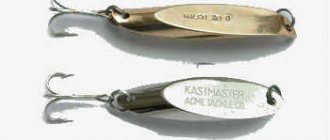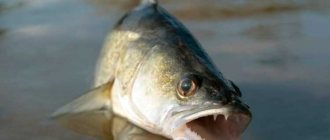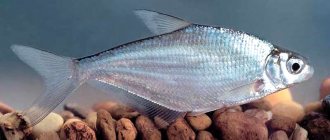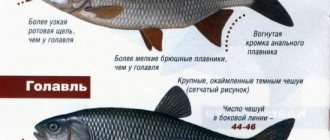Author: Anton
18 April 2021 17:44
Community: Animals
Tags: most dangerous predators predators in the ocean
5292
8
Ocean predators aren't just sharks. There are a large number of other creatures that hunt successfully in the waters.
0
See all photos in the gallery
The oceans are full of predators. Some of them pose a mortal danger even to humans, while others are not able to cope with such a large potential “dinner”, but can still cause a significant bite, burn or other damage. It is worth considering which ocean predators are the most effective, and which of them can impress with their hunting skills.
Anemones
0
Man does not too often encounter such creatures that live at the bottom of the seas and oceans. Anemones are typical bottom dwellers, similar to peculiar flowers swaying in the water. They can reach up to a meter in size and are exceptionally beautiful. But you shouldn't touch them. After all, this is a predator that, when potential prey approaches, throws out tentacles soaked in neurotoxins and capable of stinging. They immediately make it impossible for small fish to move, which this creature drags towards itself and eats. Anemones do not need to move; they calmly wait for their prey in eternal ambush. They cannot eat a person, nor can they paralyze them, but if you try to touch one of the sea flowers, you can get burns.
Salmon family
Salmonids are widespread fish in Eastern Siberia. Five species of salmon have settled in Baikal. Some of them can be considered the hallmark of the lake. Well-known and popular types of fish in Baikal are, first of all, salmon.
Char
A species called Arctic char lives in Baikal; its system name is Savlelinus alpinus crythrinus. There are lake and migratory forms of this fish. Migratory loaches grow up to 80 cm and weigh 16 kg. The lake form is smaller - up to 40 cm and 1.5 kg.
Loaches look for food on coastal slopes, at depths of 20-40 m. Small loaches feed on larvae, crustaceans, and everything called zooplankton. The large one feeds on young fish and does not disdain cannibalism.
Migratory forms for spawning make their way up river streams, lake forms go to shallow water, to river mouths. Spawning takes place in the fall. Lake loaches live 10-16 years; in anadromous fish, old age begins at 18 years.
Taimen
The habitat of the common taimen begins in the south of the Far East and ends in North-Eastern Europe. Individual specimens of this species can weigh 30 kg; there are record holders who have reached the 60 kg mark. The fish of Baikal in the photo are most often represented by the mighty taimen.
Taimen is a predator with a large head and a thick, slab-like body. As a larva, it feeds on zooplankton. At a young age, it moves to insects and juvenile fish. Adults attack large fish and even waterfowl.
To spawn in early summer, fish 6 years of age and older rise into the rivers. Females lay tens of thousands of eggs. Incubation lasts 35-40 days. The emerging larvae seek refuge among algae and stones. By the end of summer they mature, move away from the shallow waters, and head down into the lake. It is believed that taimen can live up to 50 years.
Lenok
Evenly distributed throughout Lake Baikal. It lives in all medium and large rivers that feed the lake with their streams. The total number of fish is not significant. Commercial value is minimal. But lenok often acts as an object of sport fishing.
Lenok is a fish that lives in small groups. A single specimen can reach a weight of 5-6 kg with a length of 70 cm. Due to its similarity, it is sometimes called Siberian trout. In the lake, it chooses littoral and coastal zones for life. Rather than lake life, it prefers to live in clean tributaries.
The species exists in two forms: sharp-snouted and blunt-snouted. These varieties are sometimes classified into independent taxa (subspecies). It begins to spawn at about 5 years of age. The total life expectancy is about 20-30 years.
Baikal omul
Lake endemic, the most famous commercial fish of Baikal is the legendary omul. It is a species of whitefish - Coregonus migratorius. The fish is subject to moderate commercial fishing. Unbalanced production, poaching, destruction of the food supply and general warming have led to a drop in the number of omul herds.
Omul is represented by three populations:
- coastal, living at shallow depths;
- pelagic, preferring to live in the water column;
- benthic, feeding at great depths, near the bottom.
Fish of the coastal population spawn off the northern shores of Lake Baikal and in the Barguzin River. The pelagic group of fish continues its genus in the Selenge River. The bottom-deep-water stock spawns in small Baikal rivers.
In addition to feeding and spawning areas, populations have some morphological features. For example, they have different numbers of rakers on their gill covers. The coastal population has 40–48 gill rakers, the pelagic population has 44 to 55, and the benthic population has 36 to 44.
The Baikal fish omul is not a large predator. A caught specimen weighing 1 kg is considered lucky. It is extremely rare to come across omul weighing 5-7 kg. The omul feeds on crustaceans and juvenile fish. A significant part of the diet consists of young yellowwing gobies.
They go to spawn in the fifth year of life. Spawning takes place in the first autumn months. The spawned eggs stick to the ground, and the larvae appear in the spring. The total lifespan of omul can reach 18 years.
Common whitefish
Presented in two subspecies:
- Coregonus lavaretus pidschian is the common name for Siberian whitefish or, as fishermen call it, pidschian.
- Coregonus lavaretus baicalensis - most often called the Baikal whitefish.
Pyzhyan is a migratory form; it spends most of its time in the lake and rises into the Baikal rivers to spawn. The Baikal whitefish is a residential form. It gains weight in the lake and spawns there. The morphological and anatomical differences between the subspecies are small.
The whitefish matures and can produce offspring at 5-8 years. Spawning, regardless of the subspecies, takes place in the fall. Larvae of winter fish appear in the spring. The total lifespan of both subspecies reaches 15-18 years.
Siberian grayling
Previously, grayling fish were classified as a separate family in the biological classifier. Now the genus of grayling, bearing the name Thymallus, is part of the salmon family. Baikal and the rivers flowing into it are inhabited by grayling of the species Thymallus arcticus, the common name is Siberian grayling.
But living conditions in Baikal are diverse, therefore, in the process of evolution, two subspecies emerged from one species, having morphological differences and living in different areas.
- Thymallus arcticus baicalensis - the subspecies has the epithet “black” due to the dark color of its scales.
- Thymallus arcticus brevipinnis - has a lighter color, which is why it is called white Baikal grayling.
Grayling prefer shallow coastal depths; black grayling is more often found in cold river currents than in lakes. Both species spawn in the spring. Graylings, like all fish of the salmon family, live no more than 18 years.
Barracuda
0
One of the most effective underwater predators is the barracuda, a thin and long fish that reaches two meters. This is a fast creature, making lightning-fast leaps and attacking with its teeth - the jaws of a barracuda, although smaller than those of a shark, are no less deadly. Usually fish become prey for underwater lightning, but it also happens that it attacks a person after seeing a tempting shiny object on him - for example, jewelry. This is an ancient fish, whose ancestors lived 50 million years ago, and a person should treat it with calm respect so as not to become a victim of a lightning attack or receive a painful bite.
What kind of fish is found in Balashikha
There are no rare exotic species in the Moscow region. Often the fish are medium in size, and large trophy representatives are almost impossible to catch. Fishermen most often catch:
There are quite a lot of crucian carp and large carp in Balashikha. These species bite especially well in paid reservoirs, but experienced fishermen also catch large carp in free ones. With bream the situation is worse; to catch a large one, you need to work hard. Pike and pike perch are also rarely encountered by beginners.
Cone snail
0
Unlike the previous creature, which looks unpleasant and does not evoke any desire to contact it, the cone snail, on the contrary, is liked by everyone, which provides many tourists with the opportunity to experience its hunting skills for themselves. In quiet times, the snail lies on the bottom and hunts for small fish and shellfish - in this it is helped by a harpoon, which shoots from the stigma when prey approaches. It should be noted that during the hungry period, these mollusks calmly eat representatives of their own species. However, if the snail comes across a person who decides to add its house to his sea souvenirs, he will also receive a painful poisonous injection, which is deadly due to the injected poison. After such an incident, you must immediately go to the hospital.
Description of the lake
In the past, here, at a military unit, there was a closed town called Zagorsk-7. The lake was located on its outskirts. Currently, it has become part of the city of Sergiev Posad.
The Torgosha River flowed nearby. In the 1960s, through the efforts of military builders and residents of the town, a dam 170 m long was created on it. This is how Lake Lesnoye was formed in Sergiev Posad. Work was carried out to improve this place. A fisherman's house and a boat station with a pier were built on the lake. Unfortunately, these structures were destroyed and have not survived to this day.
The lake has an oblong shape with many bays. On the right side there is a sandy beach, the remaining shores are located in the forest. The reservoir stretched along the bed of the Torgoshi River. The length of Lesnoye Lake in Sergiev Posad is about 5 km, the width is from 200 to 400 m. The depth is small, about 4-5 m. The holiday village “Lesnoye Lake 2” is located nearby.
In 2021, repairs to the dam on the lake began. The slope of the structure will be strengthened with slabs, it will be landscaped and an asphalt path will be made. It is planned to modernize the drainage and water intake facilities. During the construction of the dam, a fountain in the form of a statue of Neptune was installed on its downstream, but over time it became clogged and does not work. It is planned to repair and clean this structure.
Cyanea
0
A huge cyanea, similar to a terrible jellyfish, has a two-meter top and 30-meter tentacles. She swims freely through the waters, and the fish themselves fall into the exposed thick tentacles in dozens, receiving their dose of poison. Despite popular belief, it is necessary to clarify that cyanea do not attack people, but they may well cause serious bodily harm. You can only swim up to this strange but beautiful predator in a very tight and reliable full-body wetsuit. And even then it would be better to refuse such entertainment.
Moray
0
Moray resembles a huge snake, its length reaches 3 meters, and a powerful ridge runs along its back. Already from its mouth you can understand that we are talking about a voracious and dangerous predator - its mouth opens surprisingly wide, and these creatures simply swallow a significant part of their daily prey whole. By nature, moray eels are distinguished by their attachment to home; they love to live in caves without leaving, especially if they manage to successfully hunt right near their home. They rarely show aggression towards humans, but for small inhabitants of the underwater world such predators become a serious threat.
Slingshot family
This large family bears the scientific name Cottidae. Widely represented in the lake. Some of the species are amazing fish of Lake Baikal . Usually all these fish are called gobies due to their appearance and bottom lifestyle. Slingshots or sculpins are divided into several subfamilies.
Yellowfly subfamily
Mostly deep-sea fish. They live in Baikal and adjacent lakes. They grow to small sizes: 10-15, less often 20 cm. All fish are indigenous inhabitants of Baikal. All yellowwings have a rather strange, sometimes frightening appearance.
- Baikal big-headed broadhead. Scientific name: Batrachocottus baicalensis. Fish endemic to Lake Baikal . Lives and feeds at depths from 10 to 120 m.
- Pied-winged broadhead. This goby searches for food at depths from 50 to 800 m. It spawns at a depth of 100 meters. Batrachocottus multiradiatus is the scientific name of this fish.
- Fat broadhead. Latin name - Batrachocottus nikolskii. It lives at the bottom, located below 100 meters. It can reside at a depth of more than 1 km.
- Shirokolobka Talieva. In the biological classifier it is present under the name Batrachocottus talievi. Most often present at a depth of 450-500 m. It can dive up to 1 km.
- Severobaikalskaya broadhead. Latin name: Cottocomephorus alexandrae. The juveniles of this fish do not fall below 100 m. Adults feed at a depth of 600 meters.
- Yellowfly. Named because of the mating colors of the male. During the pre-spawning period, its fins acquire a bright yellow color. Scientific name: Cottocomephorus grewingkii. It lives not only at the bottom, but in pelagic zones at depths from 10 to 300 m.
- Long-winged broadhead. The fish is so named because of its particularly long pectoral fins. In summer it lives at the bottom at a depth of up to 1 km. In winter, it migrates vertically to shallower depths. Cottocomephorus inermis - present under this name in the biological system classifier.
- Rock shrew. It lives on rocky soils at a depth of 50 meters. The juveniles move to shallow water, where they become desirable prey for hungry fish. Scientific name: Paracottus knerii.
Subfamily Golomyankov
This subfamily includes a unique fish of Baikal - golomyanka . System name: Comephorus. Presented in two types:
- big golomyanka,
- Golomyanka Dybovsky or small.
One third of the body of these fish consists of fatty deposits. They do not have a swim bladder and are viviparous. Adult golomyankas grow up to 15-25 cm. They live in the pelagic zone at decent depths - from 300 to 1300 m.
The most interesting thing is that golomyanka is a transparent fish of Lake Baikal . She implements a unique strategy for preserving life - she tries to become invisible. But this doesn't always help. Golomyanka is a common prey for most fish species and the Baikal seal.
Saltwater crocodile
0
The saltwater crocodile lives in salty waters, it has a ferocious temperament and even attacks people. This is the largest crocodiles alive today, growing up to 7 meters, it can weigh about 2 tons. Crocodiles attack everything that they can mistake for food; there are frequent cases of cannibalism, destruction of each other by large males competing with each other. Despite its enormous size and weight, this predator easily controls its body and can even jump out of the water completely. It is not surprising that all living things fear him.
Fishing on the lake
Many people come to Sergiev Posad for fishing. The fauna of Lesnoye Lake is quite diverse. Here you can find bream, roach, crucian carp, and perch. If you position yourself with a fishing rod just to the right of the dilapidated bridge, you can catch a bream.
Fishing enthusiasts in Sergiev Posad say that the lake also contains quite large fish: pike, carp, tench. Sometimes individuals weighing up to 10 kg were encountered. But for this you need to know the most suitable places for fishing. In the past there was a Red Bridge on the lake, but it has not survived to this day. But old-timers remember its location. Places near the former bridge are considered optimal for fishing. You can ask the locals for directions. The landmark will be abandoned horizontal bars and sports equipment on the path; this path leads to the former bridge.
